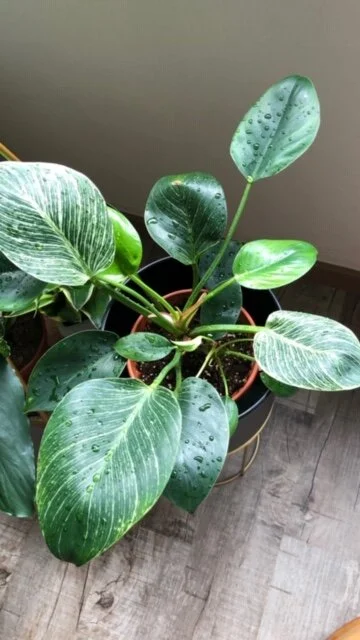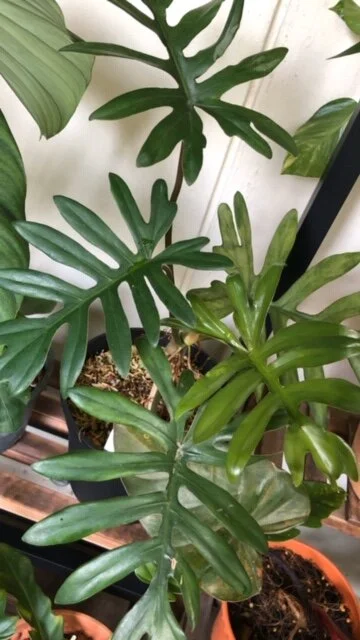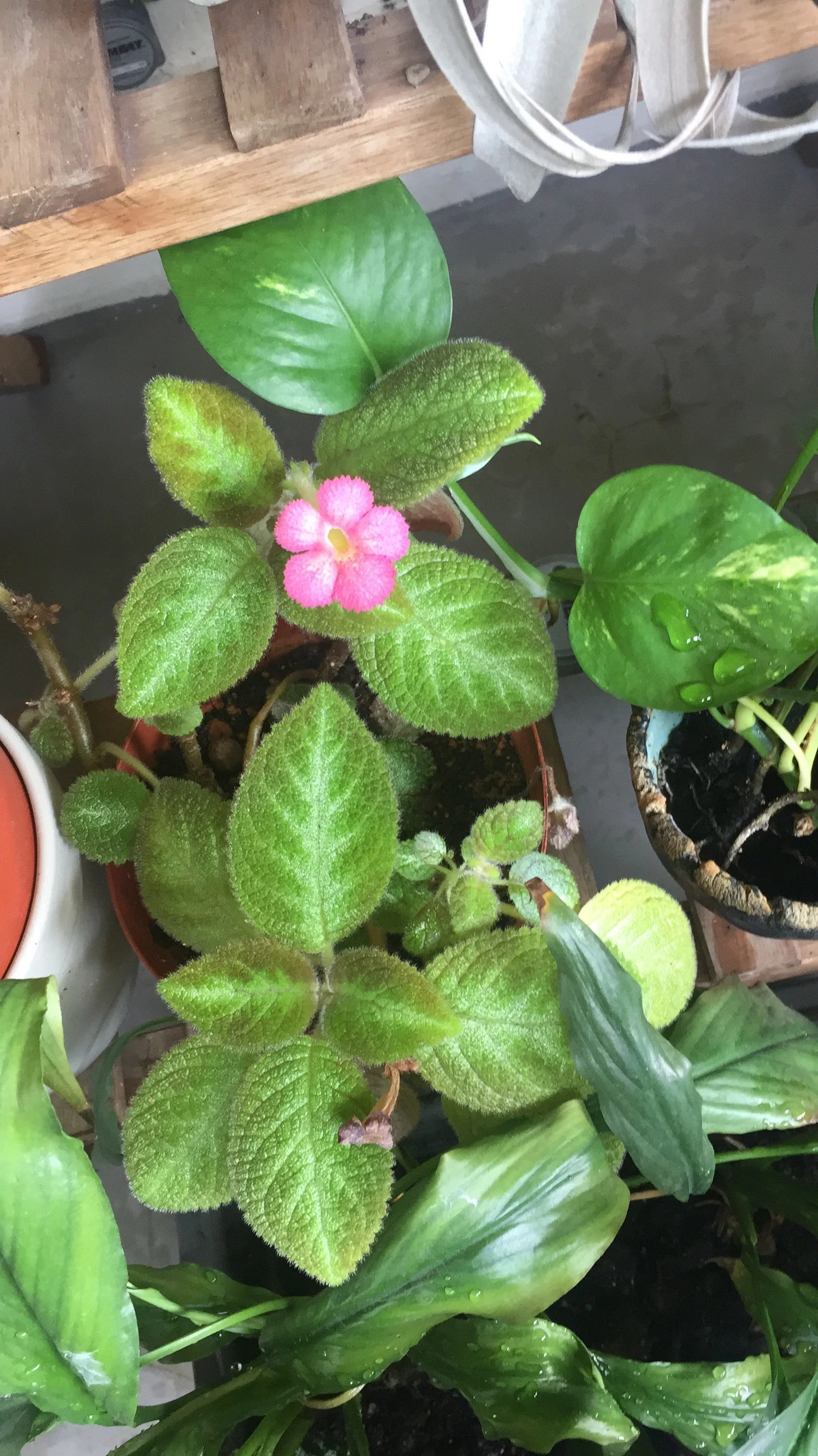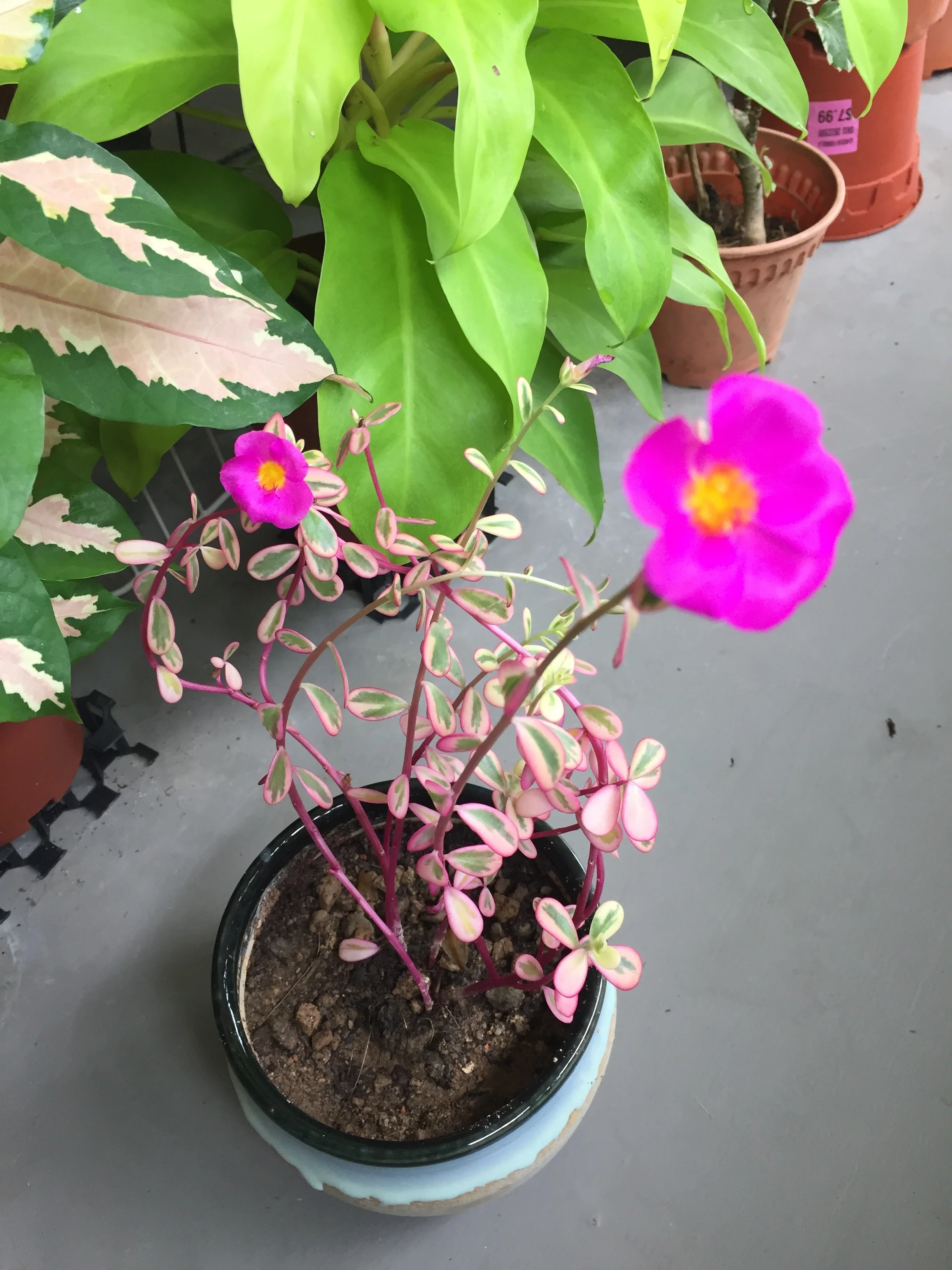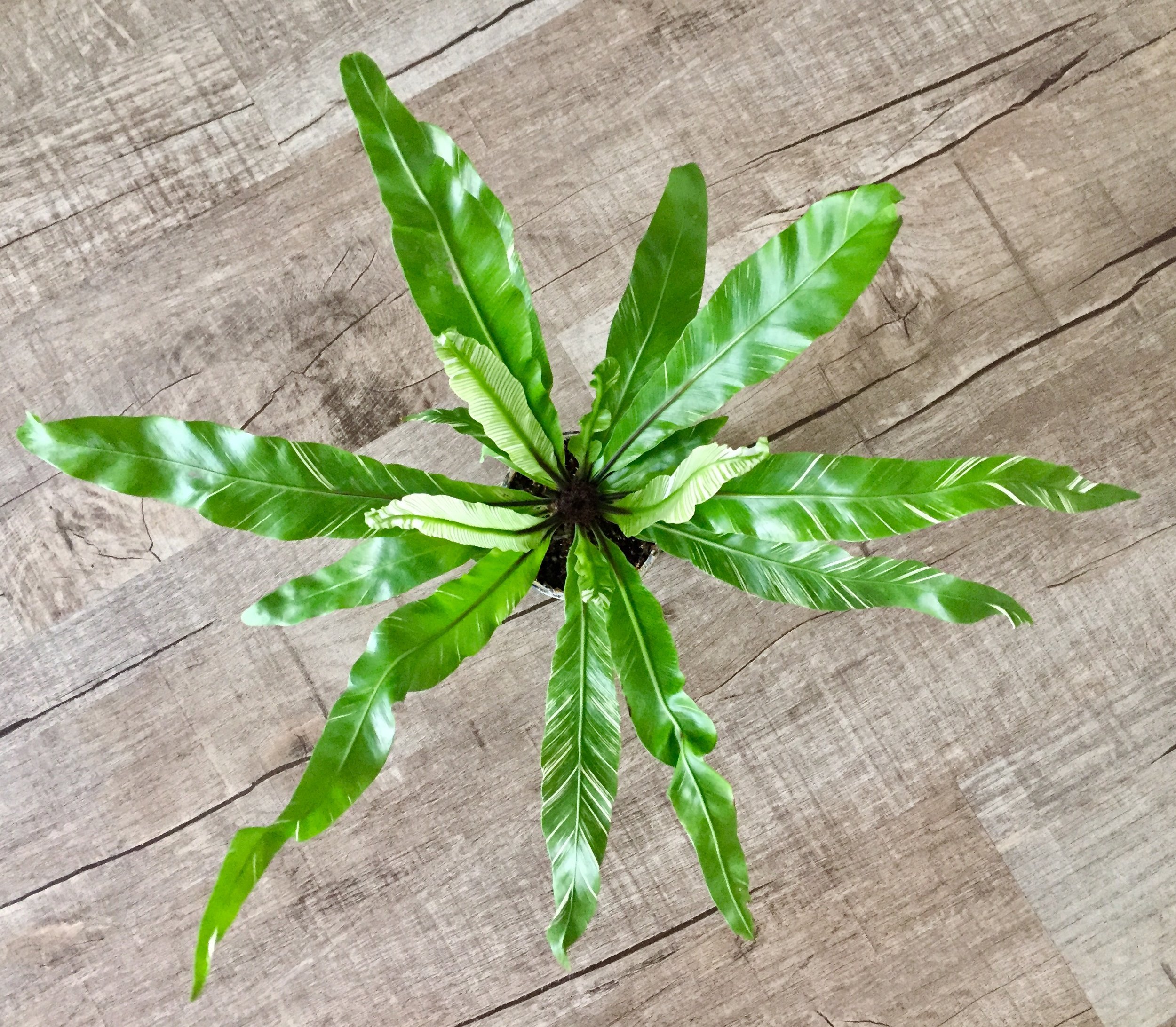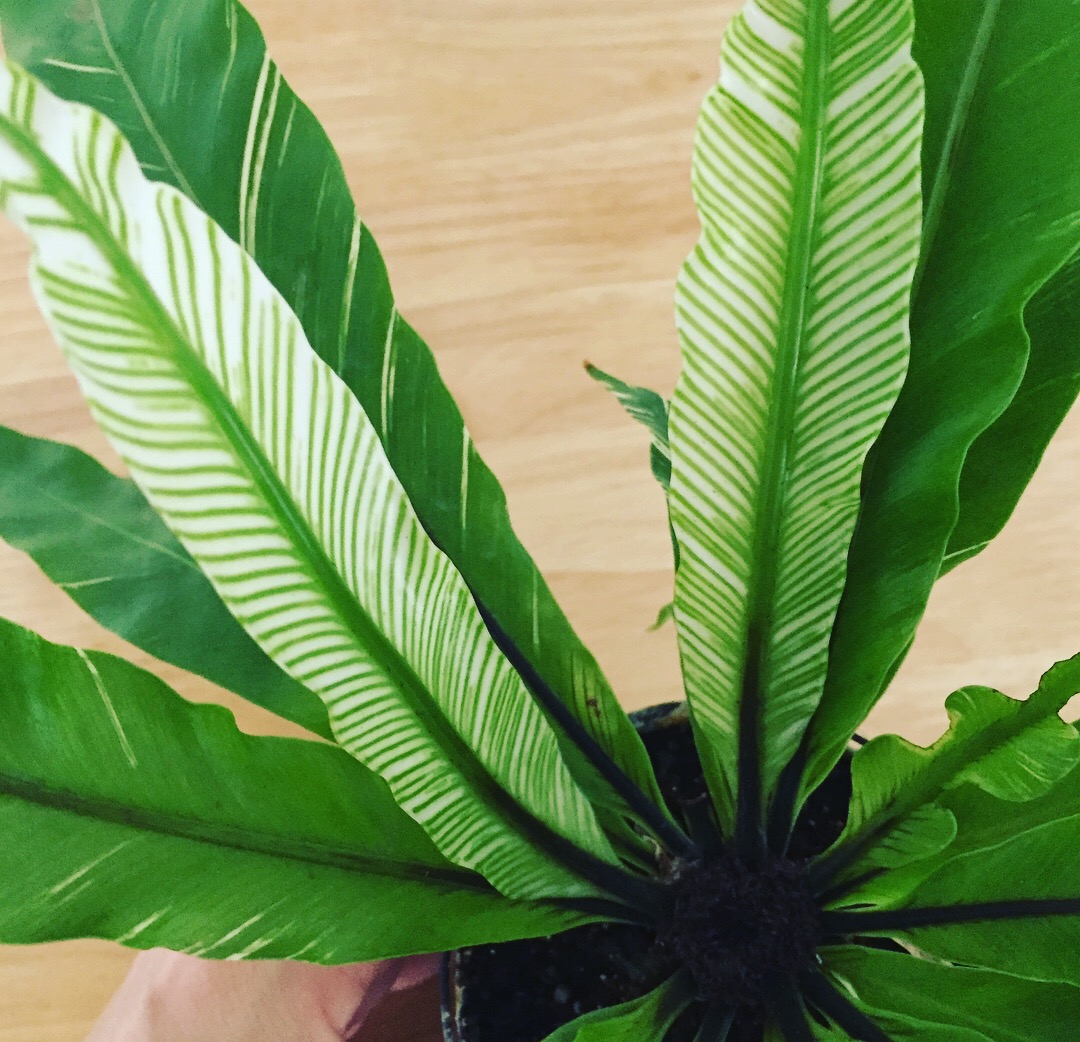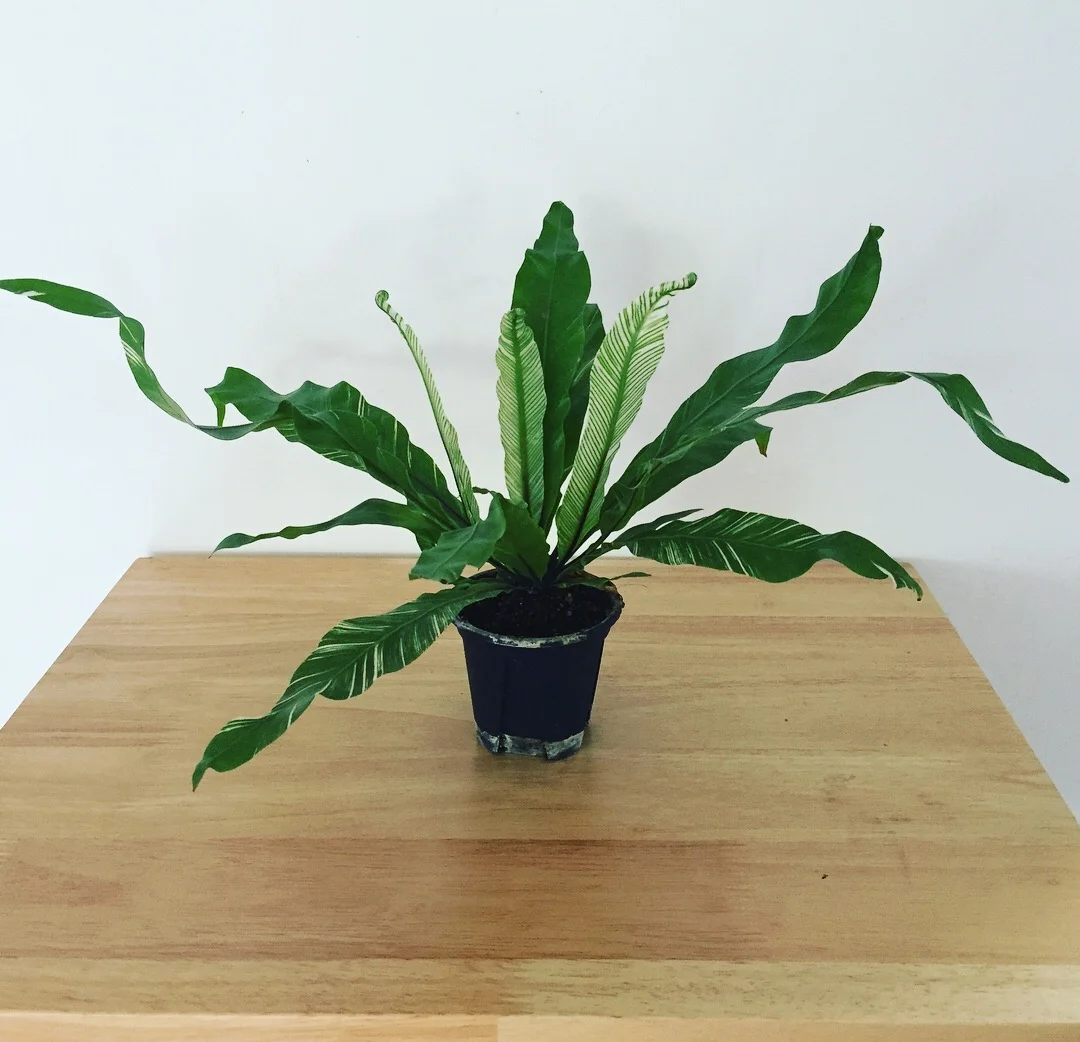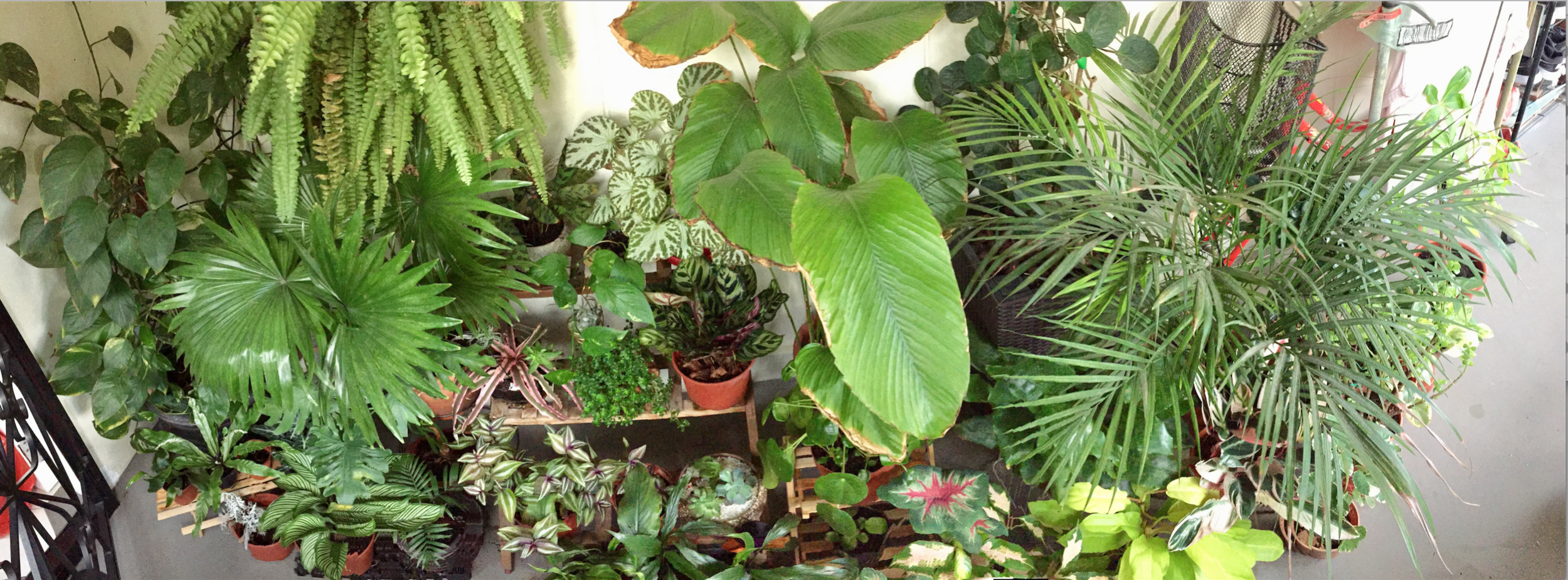Care tips for Anthurium Crystallnum in Singapore
Plant Lessons of Lockdown: Philodendron Birkin
Philodendron Birkin
When I found out the name of this plant, two things hit me. One, it must be new and man made. Two, it has to be designed to appeal to the Instagram world. A little digging and it seems I was wasn’t far off.
The Birkin is indeed manmade but what fascinated me was the plant it is supposedly derived from - the Rojo Congo. It’s so different in looks I’m wondering if I’m going to have another plant by the end of the year. Very little can be found about how to care for it because of its short history. Everyone will tell you it’s easy to care for.
But who can resist this very fashionable looking plant for now? Mine is about 5 months old, and I’ve kept it indoors. I’ve only just moved it to a brighter spot, wondering if that would improve the variegation of leaves.
I am now wondering how this plant will pan out. Will it outgrow its stripes eventually and go back to green? Should I put in an even brighter spot to see if the variegation changes? Does temperature have anything to do with it?
More updates in the coming weeks.
Light: Bright, but away from direct light.
Water: About 4 - 5 days depending on the weather.
Soil: A mix of potting soil, peat and perlite.
Plant Lessons of Lockdown: Philodendron Mayoi
What’s a creative to do when walking to the water cooler, grabbing tea at the coffee shop, or bantering with team mates for a breather no longer exists? Dig up history about plants. Here’s a Philodendron Mayoi. Discovered in the year 2000 in the rainforests of Brazil. With the double talent of being both a terrestrial (creeps along the ground), and a hemiepiphyte - the kind of species that can begin life growing out of the ground and then climb up a tree, or root on a tree as an epiphyte and then grow roots down to the soil.
Light: Medium bright. I have it about 6 feet away from the corridor ledge, clustered with other philos.
Water: A deep water through, every 4 - 5 days, but it really depends on the weather.
Care: Low maintenance. Similar behaviour to other philos. If you can keep a money plant alive, you can keep this one.
Where did I buy it: Terrascapes LLP
Philodendron Mayoi
Plant Lessons of Lockdown: Philodendron Burle Marx
With Covid-19 and the time I’ve gotten back in 2020, it feels great to be back rejuvenating the corridor jungle I neglected. So I’m back recording down my lessons and observations! Great news is, the plants that hated me in 2019 are starting to love me back. Am I glad this variegated Philodendron Burle Marx survived.
Care: Bright light but out of direct sun. This plant does best for me when it’s clustered with other plants.
Watering: About once a week. I do wait for it to dry out an inch from the top before watering.
Difficulty: Great for beginners. It survived being ignored for over two weeks, followed by sporadic watering for a few months when work took me away. The leaves will wilt and look sad but it perks up quickly. I’d classify this as resilient and hardy.
Where did I buy this: Raymond’s Alcove
Philodendron Burle Marx (2019)
Pilea Peperomioides
Also known as the Chinese Money Plant or the Pancake. The most hipster plant on planet instagram is really easy to look after. I think that's largely why it's proliferating all over social media. It's so low maintenance everyone can be successful and take beautiful pictures of it. But hey, if it's encouraging more plants in our surroundings, I'm all for it. Look after this like you would any typical money plant and it will stay happy.
Difficulty level: Easy
Sunlight: Loves light but not direct sunlight. So the corridor is great. Appreciates dapple light from the morning or afternoon sun. It also does great in the shade and indoors.
Water: Let it dry out before watering because it's susceptible to root rot. Hydrate only when top of soil feels dry. Water through and deeply. If unsure, don't water, especially if your plant is indoors. When it's thirsty, the leaves will droop more than usual and you'll know it's time. I cut the watering frequency by approximately half when it's indoors.
Babies springing up from beneath the soil.
Propagation: Super easy. The mother plant pops out babies from the soil. When they're about 3-inches tall, you can separate them by cutting them about 1-inch down the roots. Use a mix of coconut husk and potting soil. It does best with a well draining medium that holds moisture.
Episcia
Difficulty level: A little tricky
Sunlight: Semi-Shade. Needs light but not direct sunlight to flower. Place under a large plant for protection. Appreciates dapple light from the morning or afternoon sun.
Water: Hydrate when soil feels dry.
These make great carpets on the ground or along a corridor with their textured leaves. Like the African Violets, it doesn't like getting its leaves wet, so water straight into the soil. I like to treat it like a semi succulent and water only when the soil looks dry.
Wandering Jew - Purple Hue
What a graphic name. But it does aptly describe the way this silvery-purply plant grows. It just stretches itself upwards, downwards, leftwards, rightwards - any direction! A super easy plant for beginners. And super easy to propagate. Just cut approximately a 6-inch stalk above two adjoining leaves, stick it into good potting soil, keep soil moist and viola! A new plant to share in less than a week. Super encouraging.
Difficulty level: Super Easy
Sunlight: Loves light but not direct sunlight. So the corridor is great. Appreciates dapple light from the morning or afternoon sun. More sun gets you more purple.
Water: Hydrate when top of soil feels dry. It likes moist soil but don't let it stand in water.
Portulaca Pilosa cv ‘Hana Misteria’
My goodness it has been hard trying to find any information about this plant anywhere ever since a friend passed it over. Top line: it's a succulent. It needs good draining soil, water sparingly, and place it under the brightest sunniest spot you can find for the prettiest pink flowers to bloom. That very likely means raising it to the the ledge of your corridor. I'm still figuring out how to prune it to get the leaves bushier.
Difficulty level: Easy as long as you can resist the urge to water it
Sunlight: All the sun you can funnel towards it for maximum flower enjoyment
Water: Hydrate only when soil is dry. I water mine every 2-3 weeks.
The "Watermelon" Arrowhead
Also known as the Goosefoot plant. Or if you want to sound clever, Syngonium Podophyllum. There are quite a few coloured varieties available in shades of greens, creams, pinks and reds. I have a soft spot for what I like to call the Watermelon Arrowhead. Found this when it just had two leaves. So I'm quite happy it now has 6.
When this plant matures, the leaves changes its shape to what seems like goose feet (hence the moniker). Personally, I don't like the leaves looking this way. You can stop it from maturing by pruning your plant often and keeping it youthful and compact.
Difficulty level: Quite easy
Sunlight: Loves light but not direct sunlight. So the corridor is great. Appreciates dapple light from the morning or afternoon sun.
Water: Hydrate when top of soil feels dry. It likes moist soil but don't let it stand in water. Enjoys a good misting, especially on hot days.
Calathea Musaica
It was instant love over the intricate network of lines on the foliage that looks almost unreal. The Musaica loves shade. Too much sun, it will lose its markings. Too little, it won’t be green. So I've been keeping it under the shade of a palm. It seems to be doing fine.
Like all Calatheas, this plant is finicky with water and responds best to water left out overnight. Instant tap water seems to brown its edges. Watch it like a hawk for the first month and adjust sun exposure and water feedings according to its temperaments.
Difficulty level: A little tricky
Sunlight: Semi-shade; great if there's sun exposure in the morning or afternoon
Water: Hydrate when top of soil feels dry. It likes moist soil but don't let it stand in water. Enjoys a good misting, especially on hot days.
From: BLG Nursery, Punggol
Variegated Asplenium Nidus
I imagine it’s detail on plants like this that inspire people to create. Certainly made me want to turn the pattern into fabric for upholstery or an outfit. I didn’t need to even think about bringing this home. I just did.
This sensitive beauty takes less light than the usual green variety because of its white variegation. It gets burnt even from dapple light. So keep it away from direct sun, in the shade, preferably under another plant, and cluster it near other moisture loving plants to help keep its leaves moisturised and healthy.
Difficulty level: Easy
Sunlight: Shady / Semi-shade
Water: Hydrate when top of soil feels dry. It likes moist soil but don't let it stand in water. Enjoys a good misting, especially on hot days.
From: BLG Nursery, Punggol
Everything I learn, I learn from murdering plants
What I've learnt so far, the hard way
- Underwatering is always better than overwatering. You can revive a thirsty plant most of the time. An overwatered plant is quite almost dead. It is death by drowning. Just imagine staying soaked in a bathtub for 24 hours. Your skin cannot breathe. You’ll feel claustrophobic. It’s not hard to see why plants hate it and give up on life.
- Great plants come to those who wait. Like all living things, plants need time to grow properly. Remember that a nursery exists to sell. Like any other product for sale, plants are boosted to look in peak condition to increase the chances of you bringing them home. It’s almost the equivalent of botox for skin. Once you bring them home, the botox wears off. You’ll need to figure out how to make your plant happy in its new home. This takes time. And sometimes, a few sacrifices and resilience in trying again. And again.
- The darker the plant, the less sun it needs. The brighter the plant, the more sun it needs. Probably not the best metaphor, but I imagine it’s like tanning. You can only get so dark when you’re dark. When you’re fairer, the sun can take you ten shades darker.
- When the leaves are plump and juicy, water less. It’s more likely a succulent or a cactus. Which are plants that hold moisture in its leaves. So like a camel that can hold water in its mouth to survive droughts in the dessert, these are plants that have been designed to survive thirst. Hold from watering till soil feels dry to touch. And remember point No.1.
- Same for how waxy it looks. The waxier it looks, water less. Think about how wax repels water. It probably means something doesn’t like water very much. Hence nature made it such.
- Colourful leaves need bright indirect light to flourish. Direct light tends to burn colourful foliage. The light at corridors and balconies are actually great for colourful variegated leaves to flourish.
- A corridor is generally dry and hot because the concrete takes in sun during the day. Clustering plants close together helps to create a greenroom effect. Misting indirectly helps keep the moisture in the air up.
- Houseplants need air circulation. If you keep your windows closed, work long hours and travel often, there are very few plants that will survive your lifestyle. So don’t believe the hype that houseplants are low maintenance. It took me 3 years to accept this. Because I really enjoy plants in my house. I’ve had to move a few of them out to save lives. There is hope however! These plants have survived up to 2.5 weeks of abandonment and may well suit your lifestyle too:
1. Bird Nest Fern Manila
2. Fittonias
3. Common Palm
4. Fan Palm
5. Mother-in-law’s Tongue / Snake Plant
6. Money Plant
While you’re away, be sure to keep them away from hot sunny windows, especially South facing windows.
- Feed fussy plants with overnight water. Plants that require less hydration like Begonias, calatheas, succulents, air plants and indoor plants have all responded better to water left standing overnight. It’s all about letting chlorine and other chemicals evaporate so it won’t affect your plants PH levels. If you can collect rainwater or lay them out to get rained on, I’m sure your plants will thank you.
- Plants need space. On a literal level, yes of course. But like humans, plants do their best when given the space to grow on their own. So avoid mother-coddling. Don’t pay too much attention or you’ll end up smothering it to death. You’ll know when a plant needs love just by looking at it - the leaves tend to droop. Then all you need to do is feed it.
The trials and tribulations of planting along a corridor in sunny Singapore
WHY When I started greening up my corridor, I was (and still am) frustrated at the lack of information about caring for tropical plants in S.E. Asia. Information is sporadic and feel like cut-and-paste pieces from western blogs. So I've decided to log the plants I find, and share my learnings on how to keep them happy. If I do send them to plant hell, which is more often than not, I’ll be sure to share what I did wrong so you can avoid it.
I don’t aim to be a wikipedia for plants in Singapore. Far from. Our homes face very different living conditions. Sun, wind, humidity, your watering habits, and your lifestyle, all play a huge part in the plants we can keep and the eventual health of our plants. But I hope this becomes the start of a compendium of home-learnt advice for growing plants along corridors.
